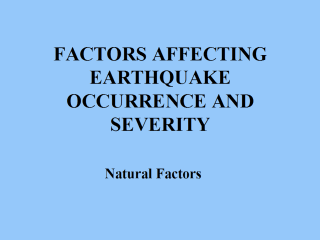 |
As shown in
Figure 8--3,
earthquakes tend to be concentrated in particular zones on the earth's surface that
coincide with the boundaries of the tectonic plates into which the earth's crust is
divided (Figure 8--4). As the plates move relative to each other along the plate
boundaries, they tend not to slide smoothly but to become interlocked. This interlocking
causes deformations to occur in the rocks on either side of the plate boundaries, with the
result that stresses build up. As the rocks deform on either side of the plate boundary,
they store energy--and the amounts of such energy that can be stored in the large volumes
of rock involved can be truly massive. When the fault ruptures, the energy stored in the
rocks is released in a few seconds--partly as heat and partly as shock waves. These waves
constitute the earthquake (21). The resultant vibrational energy is then
transmitted through the earth's surface, and when it reaches the surface, it may cause
damage and collapse of structures, which in turn may kill and injure the occupants of
these structures. These large and inexorable forces are responsible
for the band of seismic activity that extends along the Pacific rim to South America and
to Japan (Figure 8--3). |
